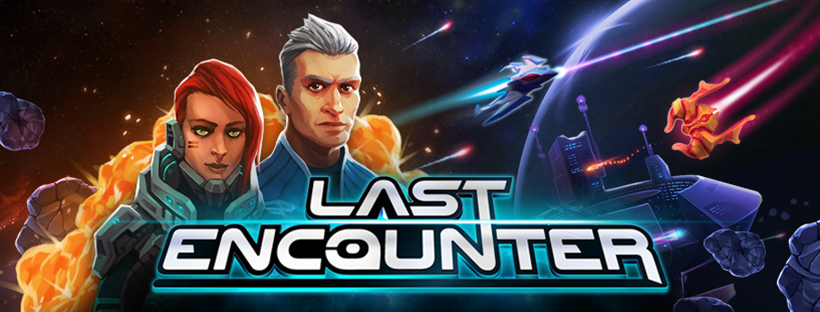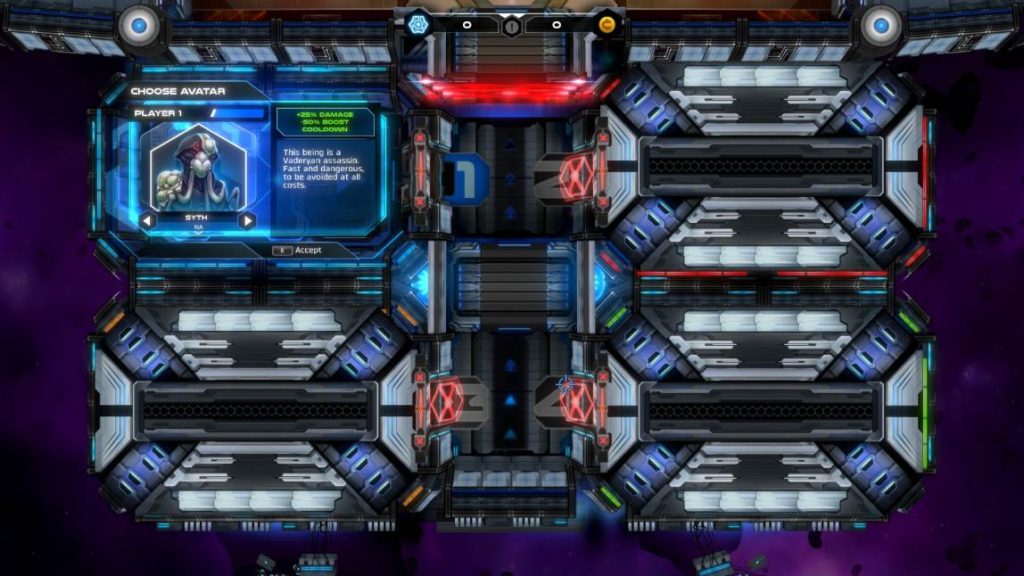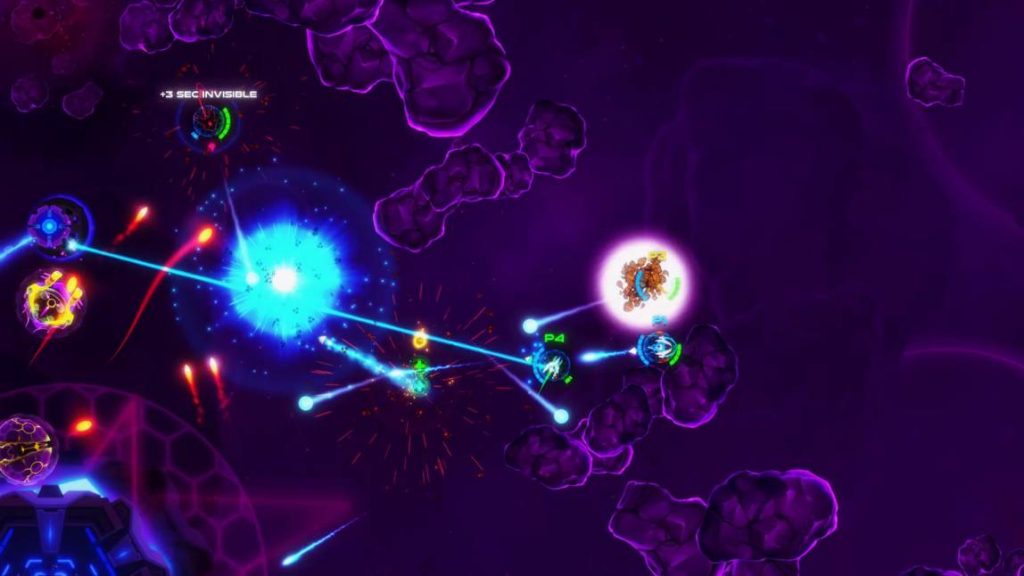
In a Nutshell: A space-based shooter that is a little different every time you play it
What Worked: colorful spacescapes, some interesting weapons, plenty of challenge
What Didn’t: frustrating control schemes, irritating design decisions, not much payoff for progress
My Overall Grade: C-
I’ve always had a soft spot for space-based games. A lot of it stems from my love of science fiction and the prospect of being able to play games where I can charge into strange new worlds. Space-based games aren’t as prevalent as I’d like, though, which means that when games of that kind come out, I take notice. I took notice recently when a little indie space shooter title released on Switch.
Last Encounter is a mulitplatform title, available on PC (Steam), Xbox One, PlayStation 4, and Nintendo Switch. The game is currently $14.99 across all four platforms.
This game is what is known as a “roguelite” game, which is a minor variation on a “roguelike” game. A roguelike game is a game where death is permanent–once you die, the game is over, and you lose everything you’ve done up to that point. A roguelite game also ends the game when you die, but some things carry over to the next gameplay. How much carries over depends on the game.
In this game, the answer is: surprisingly little … and what you think of that will have an enormous impact on how you view this game.
Let’s start with the basics. At the outset of the game, players go through a tutorial level where they are introduced to the game’s combat mechanics. The tutorial is fairly basic, and I discovered there are some details it doesn’t cover — such as a full understanding of how powerups work or exactly how the game’s death penalty operates — so, while it will give you a basic sense of how to fly, it doesn’t do a lot for helping you survive the game. That takes time.

Once you’ve finished the tutorial, the game will send you off into space, where you’ll blast your way through various procedurally generated levels. In plan English, that means that the game randomly creates places for you to fight, and by beating those places you’ll unlock the ability to move to other places.
Space is busy. You’ll run into celestial hazards, enemies large and small, and other obstacles that stand in your way. You’ll also find space is littered with bits of help, from small power-ups that momentarily buff your ship to alien space stations that let you pick up more lasting upgrades, for a price.
The controls can be done in both single Joy-Con or dual Joy-Con modes, and both are a pain in their own unique ways. The single Joy-Con maps firing to the joystick and maneuvering to the buttons, and while the shooting is easy enough, the maneuvering ends up being clunky. Dual Joy-Cons would seem to solve that problem with twin sticks, but the developers inexplicably decided to require holding down the ZR button to fire in addition to moving the right stick when using two Joy-Cons. This combination inevitably leads to some truly hand-cramping combat, and there is no way to customize the controls. (I contacted the developer about this, I was thanked and told they would “definitely consider adding this feature to the game.” Time will tell.) The dual Joy-Con mode is superior, but it’s far from perfect.
Death is permanent. In other words, if you die, it’s game over and you have to restart back from your home base. For the most part, you lose what you’ve gained during your fighting. Any upgrades to weapons, health, or shields are wiped out when you die — even ones you purchased at the start at your home base — and the levels are reset back to their enemy-infested former selves. In addition, players lose half of their cash when they die. This cash loss is particularly annoying, because if you die early in a run you can quickly find yourself down to so little money you can hardly afford anything.
What’s more, if you quit and return to base, it’s just like you died: you lose everything. This is especially onerous in that it means you can’t pause and quit the game to play other games. So if you’ve made a lot of progress and you want to load up a different game for a while, you can’t, at least not without forfeiting everything you’ve done up to that point.
So what do you keep? A few things. You keep half your cash, such as it is, and the ability to purchase upgrades (purchase being the word here, since you have to buy them all over again). In addition, each stage has a giant boss at the end of it, and if you defeat that boss you don’t have to face it in the future, although you still have to fight your way back from the earliest stages to the later ones.
Another carryover: unlocked ships and pilots. Throughout the game, you’ll unlock new ships and new pilots to fly them, and those remain available even if you die.

The game does offer a mulitiplayer mode. In general, that mode does add some variety to the game, as well as one small bit of help … namely, that you can revive fellow players so long as there’s at least one surviving friendly ship still in the fight.
Overall, this is one of those games that’s going to appeal based on your tastes. If you like a punishing twin stick shooter that pretty much sends you back to square one each time you die, you might like this game. However, if progress is important to you, you’re probably going to find this game to be pretty frustrating after a while, especially if you make it deep into the stages and then end up having very little to show for it. That will go a long way toward determining if the $14.99 price tag is worth it.
I was provided a copy of this game in exchange for an honest review. I’ve been reviewing games for a long time, and I can say that getting a game in no way influences how I score it.




